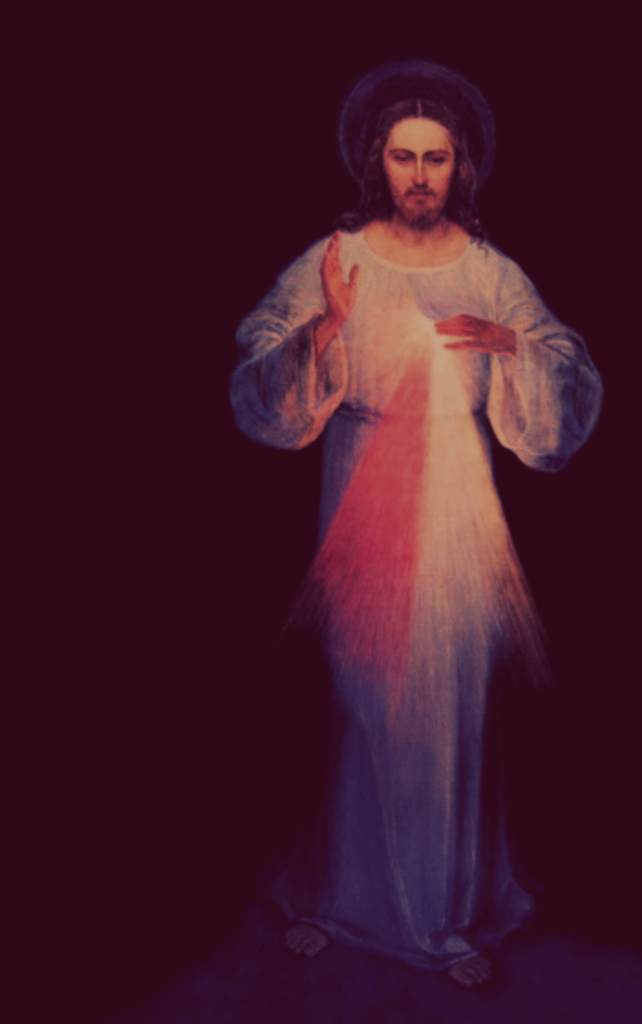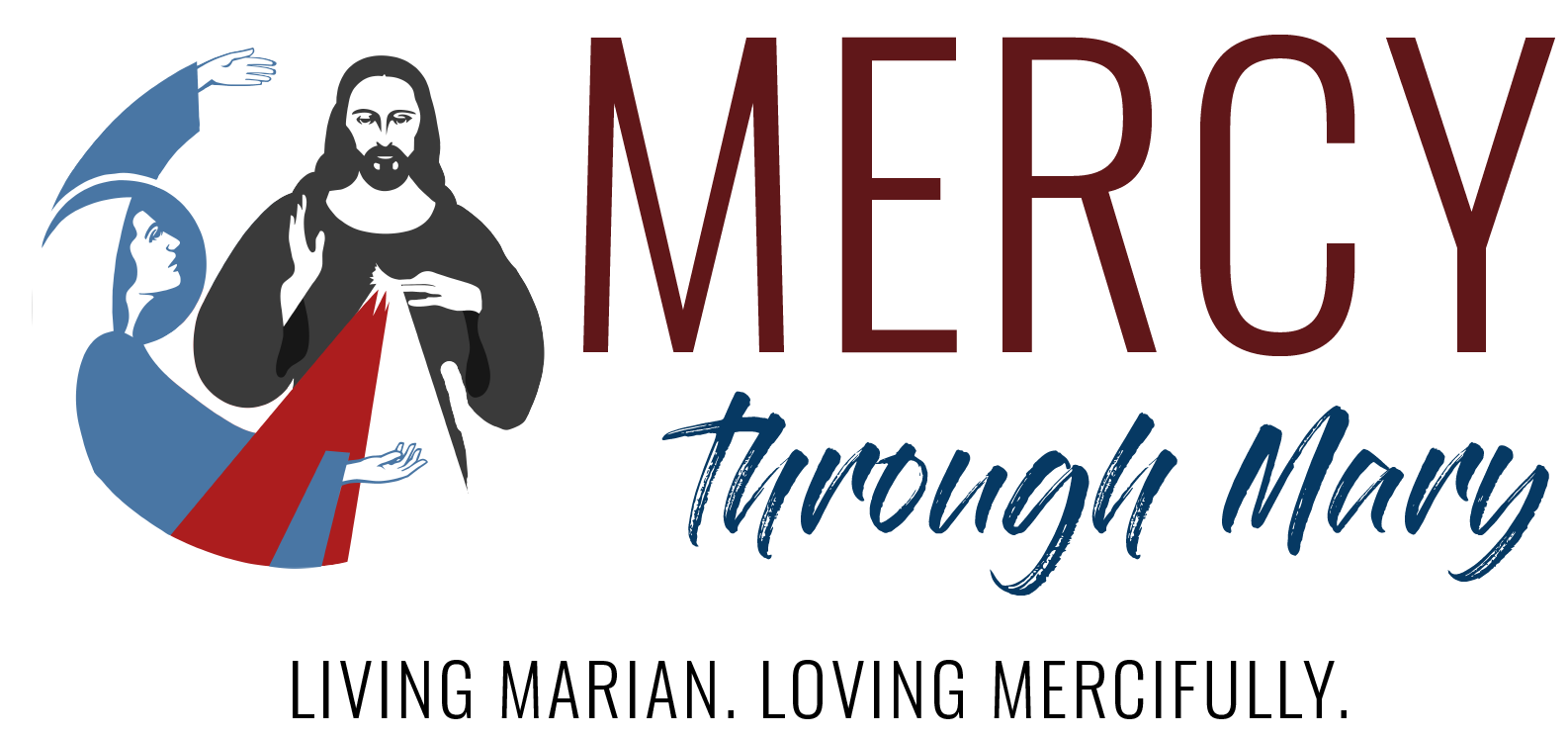The heart of the gospel is
Divine Mercy
Divine Mercy gets to the heart of Sacred Scripture! Divine Mercy is “Love’s second name.”
It is a particular mode of love that encounters brokenness. Divine Mercy is when God’s love meets us and helps us in the midst of our suffering and sin. The Lord is always stepping out in compassion to help us: poor, weak, and broken sinners. Every good we receive is an expression of Divine Mercy.

Heart of the Gospel
Loving mercifully
Learn, Live, and Share the Merciful Outlook
Ocean of Mercy
ABC's of Divine Mercy
Parts of the Message
of divine mercy- F.I.N.C.H.
What Jesus said about the Feast of Divine Mercy:
“On that day (Divine Mercy Sunday), the very depths of My tender mercy are opened. I pour out a whole ocean of graces upon those souls who approach the fount of My mercy… On that day, all the divine floodgates through which graces flow are opened. “ (Diary, n. 699).
The Feast of Divine Mercy aka Divine Mercy Sunday which falls on the Second Sunday of Easter! What’s so great about Divine Mercy Sunday? Look at it this way: What’s the most important Feast Day of the year? Easter, right? We celebrate Easter for eight full days, which is why we call it day the Octave of Easter. But the Last day is the greatest of all: the eight day! Divine Mercy Sunday is the eighth day of Easter, the pinnacle of pinnacles of Feast Days!
This day existed way before St. Faustina. In fact, it has its roots in the Easter celebrations of the early Church. This great feast of mercy had been forgotten and was almost completely unknown. So Jesus used St. Faustina to make this Feast known and celebrated again. Regarding Divine Mercy Sunday Jesus told St. Faustina, “The soul that will go to Confession and receive Holy Communion shall obtain complete forgiveness of sins and punishment.” (Diary, n. 699). Now, that’s a big deal. It means that if we were to die right after receiving this grace, then we wouldn’t, then we wouldn’t have to go to Purgatory! In other words, our slate is wiped clean. St. JPII likened the grace of Divine Mercy Sunday to a second baptism. Of course, it’s not the same as Baptism, but it is an extraordinary grace of being cleansed of sin and the punishment due to sin.
The good news about the grace of Divine Mercy Sunday is that to receive it you simply need to:
1) Go to Confession within 8 days before, on, or after the Feast. 2) Be in the state of grace (have no mortal sin on your soul). 3) Receive Holy Communion with the intention of obtaining the promised grace.
Of course, we should also do acts of mercy such as forgiving people, praying for others, and having the intention to be more merciful to our neighbor.
What Jesus said about the Image of Divine Mercy:
“I am offering people a vessel with which they are to keep coming for graces … that vessel is this image with the signature, ‘Jesus, I trust in you.’ By means of this image, I shall be granting many graces to souls.” (Diary, n. 327, 742).
Jesus told St. Faustina to have an image painted just as he looked when he appeared to her. She obeyed and had it painted just as he looked when he appeared to her. She obeyed and had it painted by a Polish artist, Eugene Kazimirowski. It took him more than 12 tries before Faustina accepted it as satisfactory.
Many people have experienced special graces through the image. On grace that comes through the image is this: It heals the way people often mistakenly view God. Here’s what I mean. People too often have a false image of God. They’re afraid of him and see him as some mean ogre just out to ruin their fun. Well, the Image of Divine Mercy help to change that. In it, we discover our Merciful Savior who surely calls us to conversion but who also blesses us, loves us, and is deserving of all of our trust.
What Jesus says about the Novena:
“By this novena, I will grant every possible grace to souls.” (Diary, n. 796).
The Novena to Divine Mercy. A novena is basically nine days of prayer in a row. Jesus taught St. Faustina a novena that he wanted her to pray and that we can all pray. Each day, he asked that a different group of people be entrusted to him (for example “all sinners” on day one and “all priests and religious on day two). The novena can be prayed at any time, but a special time to pray it is in preparation for Divine Mercy Sunday. The starting date for the novena, combined with praying the Chaplet of Divine Mercy, is Good Friday, and it ends on the Saturday after Easter Sunday, the day before Divine Mercy Sunday. While you don’t have to pray this novena to obtain the grace of Divine Mercy Sunday, it is a good way to prepare for the Feast!
What Jesus says about the Chaplet:
“Say unceasingly the chaplet that I have taught you. Whoever will recite it will receive great mercy at the hour of death…. Even if there were a sinner most hardened, if he were to recite this chaplet only once, he would receive grace from My infinite mercy.” (Diary, n. 687)
“Oh what great graces I will grant to souls who say this chaplet; the very depths of My tender mercy are stirred for
the sake of those who say the chaplet.” (Diary, n. 848).
The Chaplet of Divine Mercy is a prayer that is prayed on ordinary rosary beads, and can be prayed in about seven minutes! The Chaplet is an incredibly powerful prayer that draws its strength from the holiest and mightiest prayer there is: the Mass. The Chaplet is an extension of Jesus’ own sacrifice of love in our hands, held up to the Father, and the Father can’t resist such a perfect sacrifice of love. It really is the perfect prayer.
The Chaplet is a bold prayer for the whole world. And it can be bold, because it relies on infinite merits: Christ’s infinite sacrifice of love on the Cross. On each “Hail Mary” bead, we pray, “For the sake of His sorrowful Passion, have mercy on us and on the whole world.” In other words, as we’re holding up to the Father his Son’s infinite sacrifice of love, we keep repeating: “Mercy, Mercy, Mercy.” More specifically we keep praying, “Have mercy on us and on the whole world.” Look under the devotional tab for how to say the Chaplet of Divine Mercy.
What Jesus says about the Hour of Mercy:
“This is the hour of great mercy for the whole world.. I will refuse nothing to the soul that makes a request of Me in virtue of My Passion.” (Diary, n. 1320).
Because Jesus died on the Cross for us at 3p.m. everyday between 3-4 in the afternoon is known as the Hour of Great Mercy. During this hour, Jesus asked St. Faustina to pray the Stations of the Cross, provided her duties permitted to it. But he went on to say, “If you are not able to make the Stations of the Cross, then at least step into the chapel for a moment and adore, in the Blessed Sacrament, My Heart, which is full of mercy; and should you be unable to step into the chapel, immerse yourself in prayer where you happen to be.. and if only for a brief moment, immerse yourself in My Passion, particularly in My abandonment at the moment of agony.” (Diary, n. 1572, 1320).
What Jesus wants above all through this devotion is that we recall his sacrifice of love. He wants us to think about what he did for us on the Cross. He simply wants our love. So let’s get to the “three o’ clock habit” and remember Jesus’ sacrifice of love for us, even if only for a moment. THIS HOUR IS A HUGE TIME OF GRACE. It’s a great time to pray for our loved ones, especially the conversion of unrepentant sinners, and to recite the Chaplet of Divine Mercy.
get involved
About
dive deeper
Monthly Newsletter
Copyright © 2018 National Young Adult Outreach of the Mary and Mercy Center: Ave Maria, FL. Under Leaders of Many a 501(c)(3) nonprofit organization.

